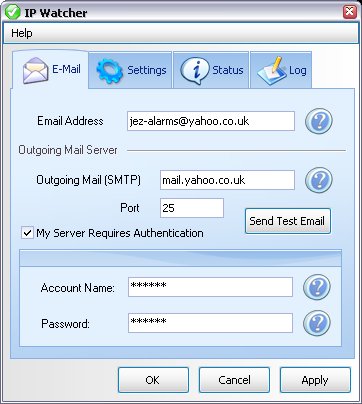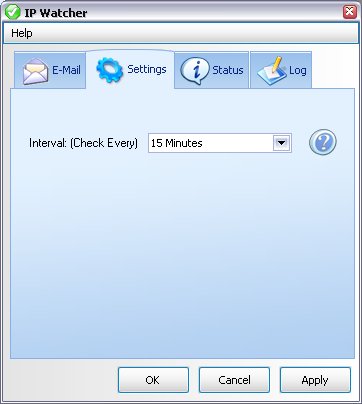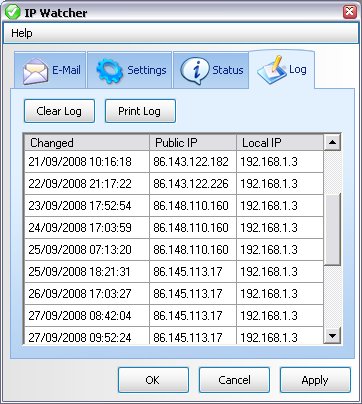 |
Remote access to CCTV via broadband. Easily said, but not always that straight forward! |
 |
|||||||
|
Requirements and considerations if you want our engineers to install: |
|||||||||
|
1. An Ethernet socket on the DVR and a spare Ethernet socket on the router or switch. (If the DVR is not located near to the router) then a cat-5 cable or patch between the router and the DVR will be required! (We can do this at a cost depending on how far etc.)
2. We may need full access to the routers setup pages. (So you must have the Admin name and password ready for the engineer to logon).
3. If you want a preferred local IP is to be used for the DVR, have this ready, otherwise our engineer will sensibly assign an IP that is free and available.
4. Ideally for remote access, your DVR would need to have web serve capability.
This means that these types of DVR are viewable from mostly any computer
anywhere without extra software. ( The default port for serving web sites and browsers )
Some older DVRís and some specialised recording equipment that donít
have a web serve facility, (For this reason, a visit to the remote viewing site/sites may also be necessary). Donít assume you can view all DVRís from just any internet cafť or wherever! Most recent DVRís make use of the port 80 (The std web port for web browsers)
But port forwarding at the remote site is still required. |
|||||||||
|
Service |
PORT | ||||||||
|
FTP |
21 | ||||||||
|
SSH |
22 | ||||||||
|
SSL |
443 | ||||||||
|
TELNET |
23 | ||||||||
|
SMPT |
25 | ||||||||
|
WEB / HTTP |
80 | ||||||||
|
IMAP |
143 or 585 or 993 | ||||||||
|
Pop3 |
110 | ||||||||
|
Remote Desktop (MS) |
3389 | ||||||||
|
PC Anywhere |
5631 + others(5632,65301,22) |
||||||||
|
Now here is the most important bit!
Are you on a (Fixed-Static IP) or a (Dynamic IP which can change)?
If you are on a Fixed IP, thereís nothing else you need to have prepared. The rest is fairly straight forward for our engineers.
(However if you are not on a fixed IP, then the following is for you!) |
|||||||||
|
Dynamic IP and DDNS providers / update settings.
If you donít know much about DDNS then donít worry because itís easier to set-up than you may think! Below is a detailed explanation so that you may understand. Once you grasp the concept, itís not difficult to do!
Most domestic homes and small business are likely to have a dynamic internet IP which although cheaper than static, they will change by hour day week, and also if you loose power or reset your router It varies. So if you want to remotely connect to your site you will need to know what your new (Public or Internet) IP is! This is where a DDNS (Dynamic Domain Name System) service comes in. (No-ip or Dyn-DNS etc) are typical providers. The cost is +/- £6 a year and take's only 1/2 an hour to set up! There are some free onesí but you may need to re-register monthly, and some redirect to advertising before your site! So pay the small fee for an enhanced service! How ďDynamic DDNSĒ works:
So when
your dynamic public IP changes "and it will", the DDNS provider will be
able to redirect web queries to your site's new IP because itís been
informed of your new IP
by the (Updater)! What's an updater? (A script or program or setting in your router that will inform your DDNS provider what your new IP address is! This can be found in either your Router or DVRís configuration, also can be a small program (free from your DDNS provider) running on a computer that is connected to the internet and is left switched on! (A home server maybe?)
Note: A lot of new routers and DVRís have a built in DDNS updater service (see picture below). Make the router your first choice, because itís always switched on! Also the router will be first to know if your IP has changed, so it will update quicker! If not then use the DVR. Failing that you will need to use the updater program that is free from your DDNS provider. Install it on a computer or server thatís left switched on. This will monitor and up-date your provider should your IP change.
|
|||||||||
|
An example of a ďBT Home HubĒ DDNS updater settings page: If you are fortunate to have a router with DDNS update, then apply the simple settings here. This example is for ďNo-IPĒ (a typical DDNS service provider). The BT home hub has other providers as well. |
|||||||||
 |
1: Your logon name with your DDNS Provider! Usually it's your email.
2: Service Provider: Select from the pull down menu.
3: The free domain name that you got when you registered with your DDNS service. |
||||||||
|
Because DDNS requires half an hour or so to setup a new account, plus a small payment to the DDNS provider. For this reason we would expect this to be done prior to our engineerís visit.
We recommend (No-ip) as a provider, as the account setup on the internet is very simple to understand. Also I believe that BT and other service providers offer a DDNS service. So If your router or DVR has built in client other than (No-ip) you may want to use it in preference.
Beware of certain free DDNS as they redirect via advertising pages and some also need monthly renewal. Typical cost of an enhanced service that does not require maintenance is about £6 per year.
OR....Go Static? You may consider all the above to be a bit involved, but once setup itís very reliable. You may like to take the easy option of a Static IP, but please note that your current internet service may not necessarily be upgradeable! You may need to re-subscribe.
Other methods to obtain your siteís
dynamic IP
Via
stand alone updaterís IP Mailer programs: There are many stand alone email updaters that will post your IP changes to your web-mail or mobile phone. Using one of these would require a computer at the remote site to be switched on all the time, to be able to post the update info to your your phone or a web mail address.
Some of these utilities are free, but hereís one that is very good and only costs very little per computer . The licence is forever and it works as a service or in windows start-up. |
|||||||||
|
Notice here how the IP has changed 4 times inthe last 6 days! IP Mailer programs: PROS: It costs little or nothing to Setup and does not involve anyone else. For added security, only you will know what your IP is today!. CONS: You wonít be able to serve a public web page from this setup. (Because itís not informing the internet of your IP changes! )
You may have to wait for an email before you can logon to your PC or CCTV. People you want to share, may not be able to access your site. Because they donít share your email. Unless you set up a free hotmail account, so everyone involved will be able to share login details and retrieve posts regarding your latest IP status!) On the whole, not as reliable. (But worth a thought!)
With this information you may feel confident enough to attempt it yourself. Itís up to you! |
|||||||||
|
No part of the written information above has been copied from any other source. The author reserves all rights. © J milner.2010. |
|||||||||



